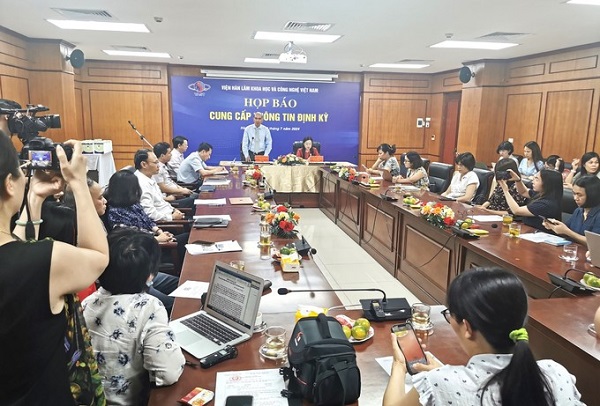
The LOTUSat-1 satellite, Vietnam's first radar satellite, is
about to be launched into space.
Yesterday afternoon, the Vietnam Academy of Science and Technology (VAST) held a regular press conference for the first half of 2024. Addressing the press brief, VAST Vice President Associate Professor Tran Tuan Anh announced that Vietnam's first radar satellite, LOTUSat-1, has completed its design and manufacturing stages and is expected to be launched into space early next year.
According to Associate Professor Tran Tuan Anh, in the first six months of 2024, VAST has been actively implementing the investment project to build the Vietnam Space Center, as outlined in the 'Strategy for the Development and Application of Space Science and Technology until 2030', issued by Prime Minister's Decision No. 169/QD-TTg in 2021.
To date, VAST has completed over 90 percent of the project's work using counterpart funds. Moreover, scientists are currently developing a project titled 'Strengthening the nation's capacity for Earth observation based on a small satellite system'.
Providing further information about the LOTUSat-1 satellite, Deputy Director Le Xuan Huy of the Vietnam Space Center (under VAST), stated that the Japanese government anticipates launching the satellite around February 2025.
According to the plan, after a three-month in-orbit test period, around June 2025, the LOTUSat-1 satellite will be handed over to the Vietnam Space Center for full system operation for five years.
In preparation for satellite operation post-launch, the entire ground-based equipment system, including the satellite operation control center and the satellite data application center, has been installed at the Vietnam Space Center in Hoa Lac in Hanoi since May 2024. The system is scheduled to be handed over in September 2024 to receive the first signals from the satellite.
Previously, Vietnam signed a contract for the 'LOTUSat-1 satellite, equipment, and human resource development' project with the Sumitomo Corporation (Japan).
The LOTUSat-1 satellite weighs approximately 570 kilograms and employs radar technology, enabling it to capture high-resolution images of the Earth under all weather conditions.
The project also aims to cultivate a highly skilled workforce, enabling Vietnam to gradually acquire and master the technology for manufacturing larger satellites
According to Deputy Director Le Xuan Huy, this satellite can capture images in all weather conditions, making it highly suitable for a country with cloudy and foggy weather like Vietnam.
At the press conference, Associate Professor Tran Tuan Anh informed that the stable operation of the Earthquake Early Warning Center and Tsunami Warning Center (under the Institute of Geophysics, VAST) and the observational station networks have significantly contributed to the early warning system and mitigation of disaster damage
For instance, from December 15, 2023, to May 14, 2024, the center recorded 126 earthquakes with magnitudes ranging from 2.5 to 4.1 on the moment magnitude scale within Vietnam's territory and waters. Of these, 23 earthquakes with a magnitude of M ≥ 3.5 were fully reported in the media.

 Previous page
Previous page Back to top
Back to top







